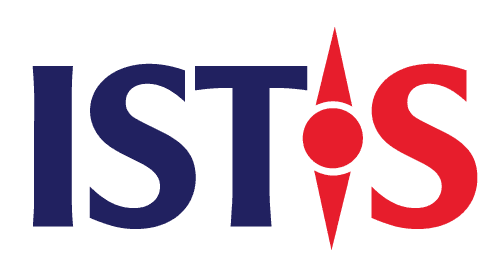In recent years, startup accelerators have become a popular tool for supporting early-stage ventures — especially in emerging markets. On paper, they offer structured programs, mentorship, exposure to investors, and a path toward growth. But in practice, many accelerators struggle to deliver meaningful outcomes. Despite polished branding and big demo days, the real value to founders is often limited — or short-lived.
The issue isn’t a lack of effort. Most accelerators are built with good intentions. Governments, NGOs, universities, and corporates all want to support innovation. But the challenge lies in execution: many programs are too broad, too short, or too disconnected from the actual needs of early-stage founders.
Some accelerators offer content-heavy schedules but little time for building. Others recruit impressive mentors but fail to provide structure or feedback. Many programs end with a pitch event — and no follow-up. Founders leave with photos and certificates, but not necessarily with new customers, partners, or capital.
In emerging ecosystems, these weaknesses are amplified. Early-stage founders face challenges that require deeper support: lack of startup experience, limited networks, unclear market signals. A few generic workshops on business models or branding won’t close the gap. Instead, what they need is consistent, contextual, and execution-oriented guidance.
When accelerators don’t deliver, it’s not just the startups that lose. It affects investor trust, public-sector enthusiasm, and the broader credibility of the ecosystem. That’s why the next generation of accelerators — especially in Southeast Asia — must be designed with clarity, focus, and long-term outcomes in mind.
The goal isn’t just to run a program. It’s to help real founders make real progress — in ways that extend beyond the final presentation slide.
What Founders Actually Need
Startup founders don’t join accelerators for coffee chats, certificates, or inspirational quotes. They join because they need clarity, momentum, and access — especially in the early stages when uncertainty is high and resources are scarce. The most effective accelerators are the ones that understand what founders truly need and build their programs accordingly.
At the earliest stage, the biggest need is validation — not just of the idea, but of the problem. Founders need structured help in stress-testing their assumptions, defining who their real users are, and understanding whether there is a market at all. Generic startup theory doesn’t help here — what’s needed is feedback grounded in real use cases, ideally from local customers or experts in the vertical.
The second major need is capability building. This doesn’t mean overwhelming founders with dozens of workshops, but curating just enough practical knowledge to help them execute better: how to prioritize features, speak to early users, prepare for first hires, or set up basic financial tracking. The best accelerators act like filters — removing noise, not adding to it.
Then comes access — to the right mentors, first customers, and capital. For founders in emerging markets, this is often the most difficult part. Introductions to investors, connections with procurement officers, or even co-selling opportunities with larger companies can be more valuable than prize money or pitch slots. What matters is building a path forward, not just a platform for visibility.
Finally, founders need support that matches their stage. A company with a prototype shouldn’t be given the same journey as one already generating revenue. Stage-fit programming increases relevance, improves outcomes, and keeps founders engaged.
Ultimately, founders don’t need more content — they need progress. And accelerators should be built to deliver exactly that.
Building a Cohort Experience That Works
Many accelerators focus heavily on visibility: a sleek website, a recognizable partner logo, or a final demo day that looks good in photos. But founders don’t measure value in media exposure — they measure it in decisions made, progress unlocked, and relationships that last. A truly impactful startup accelerator is designed for depth, not just optics.
First, the structure must give founders room to build, not just attend. Overloading the schedule with back-to-back sessions may feel productive, but it often distracts from core work. The best programs carefully balance workshops with maker time, feedback loops, and structured check-ins — allowing founders to apply what they learn, not just absorb it.
Second, the cohort experience matters more than many realize. When founders trust each other, they share real problems, offer peer feedback, and form long-term support systems. Designing for this means curating the cohort intentionally — not just by sector or stage, but by mindset. Programs that encourage transparency, group retrospectives, and shared rituals often build tighter bonds and stronger companies.
Mentorship is another key pillar — but only when it’s consistent and aligned. Founders don’t need one-off expert talks; they need mentors who understand their business, follow their journey over time, and offer honest, actionable advice. Programs that pair founders with a dedicated lead mentor — or form mentor squads around specific themes — tend to produce deeper learning.
Finally, accelerators must avoid the trap of trying to look like global models. The best experiences are grounded in local relevance — using examples, speakers, and strategies that reflect the realities founders face in their region or sector.
A startup accelerator designed for depth creates not just better decks — it builds better decisions, stronger relationships, and more resilient founders.
What Makes an Accelerator’s Impact Last
Demo Day may be the most visible part of a startup accelerator — but it’s often the least meaningful in terms of long-term outcomes. For founders, real value emerges not from applause or investor panels, but from what happens after the program ends. The strongest accelerators are those that invest in continuity, connection, and compounding support.
Post-program support begins with follow-through. Are mentors still available? Are investors still in touch? Do founders have a channel to ask for help months later? Even basic things — like warm intros, update calls, or alumni office hours — make a difference. It shows that the startup accelerator is not just a one-time event, but a long-term partner.
An active alumni network can also extend the value significantly. When former cohort members continue to support each other — through shared job boards, pilot opportunities, or co-marketing deals — they form an organic layer of strength in the ecosystem. Facilitating this doesn’t require massive infrastructure — just intent, consistency, and shared norms.
Beyond the startups themselves, strong accelerators also help founders build investor readiness. This means practical support in refining their data rooms, understanding term sheets, and structuring follow-up rounds. When early investors see that alumni consistently arrive well-prepared, their trust in the program deepens — and future fundraising becomes smoother for others.
Some programs go further, embedding themselves into ecosystem partnerships — co-investing with local funds, collaborating with government innovation agencies, or aligning with corporate partners for pilot launches. These connections open doors long after the formal program ends.
In short, a startup accelerator’s true impact is measured not by the stage lights, but by the stepping stones it lays. The more durable the support, the more founders can keep building — even when the banners are gone.
Redefining Success
Too often, startup accelerators in emerging markets try to mimic the models of Silicon Valley — chasing unicorns, spotlighting rapid growth, or optimizing for investor buzz. But the ecosystems they operate in are different: smaller capital pools, younger founder communities, and markets shaped by infrastructure gaps and cultural nuance. To be effective, accelerators in these settings must redefine what success looks like — and design around it.
Instead of measuring outcomes by valuation or media coverage, impactful programs in Vietnam, Indonesia, or Kenya increasingly focus on:
- Startup survivability beyond the first year
- Founders’ readiness to attract meaningful capital
- Customer traction that proves real product-market fit
- Retention of local talent, especially tech and product roles
- Long-term founder relationships, not just batch metrics
These aren’t small wins — they are foundational to the health of the ecosystem. A startup that stays alive, grows sustainably, and contributes to the local economy is far more valuable than one that flares brightly and burns out after Demo Day.
Accelerators also have the opportunity to lead by centering on local context. They can prioritize real-world challenges — logistics, education access, healthcare delivery — and support startups that solve them with deep empathy and relevant tech. They can rethink cohort structures, mentor formats, and funding mechanisms to suit the region’s realities.
By resisting the pressure to replicate, accelerators can become models of original, context-led innovation. They don’t need to follow global playbooks — they can write their own, and export it later.
In doing so, they elevate not just startups — but the entire narrative of what meaningful innovation can look like in fast-changing, high-potential economies.








